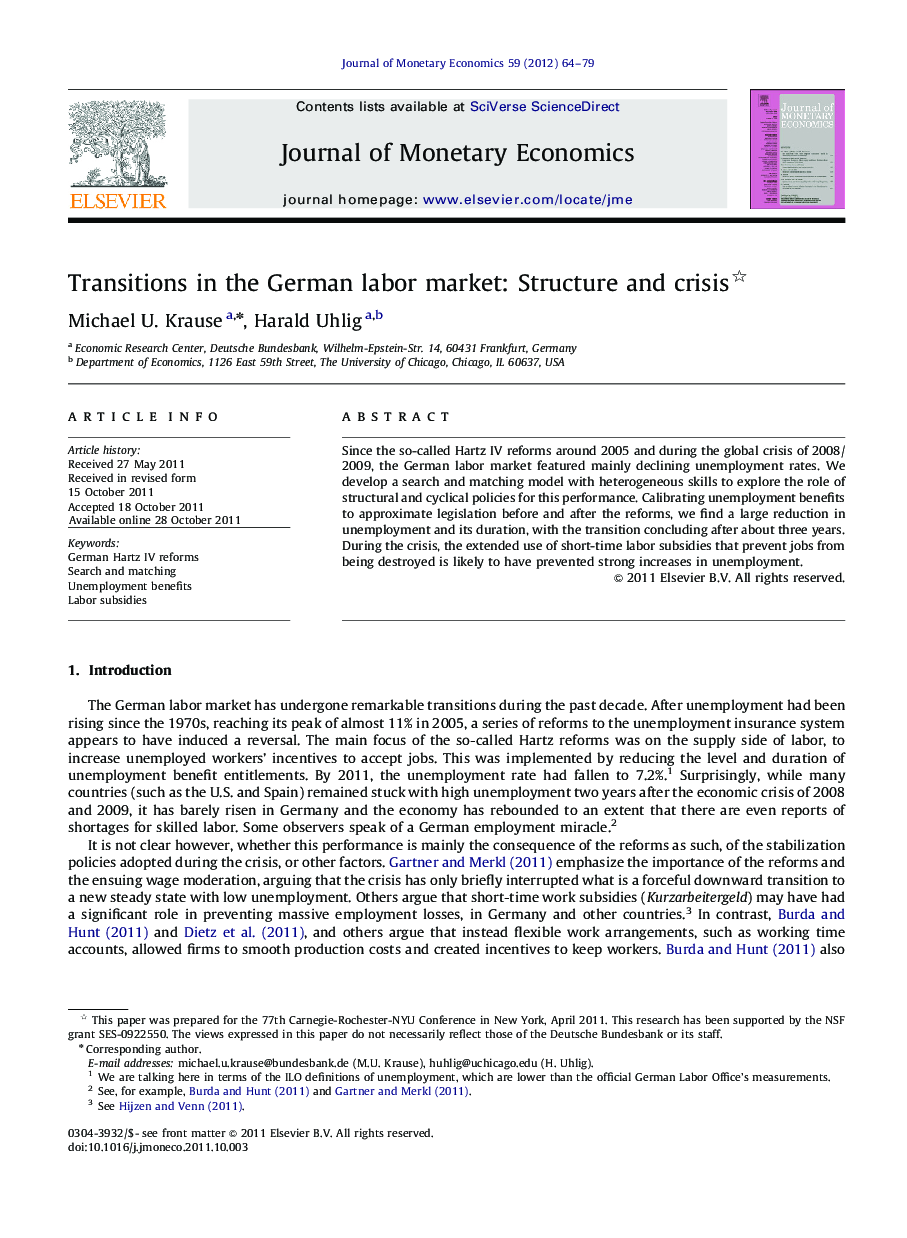| Article ID | Journal | Published Year | Pages | File Type |
|---|---|---|---|---|
| 967717 | Journal of Monetary Economics | 2012 | 16 Pages |
Since the so-called Hartz IV reforms around 2005 and during the global crisis of 2008/2009, the German labor market featured mainly declining unemployment rates. We develop a search and matching model with heterogeneous skills to explore the role of structural and cyclical policies for this performance. Calibrating unemployment benefits to approximate legislation before and after the reforms, we find a large reduction in unemployment and its duration, with the transition concluding after about three years. During the crisis, the extended use of short-time labor subsidies that prevent jobs from being destroyed is likely to have prevented strong increases in unemployment.
► The paper analyses the effects of the German labor market reforms of 2005. ► Labor market search and matching model along with skill heterogeneity. ► Focus on steady-state adjustment and responses to crisis 2008/2009. ► Reforms had strong effect on unemployment rate and duration and transition is fast. ► Labor market subsidies important factor in explaining German unemployment dynamics.
